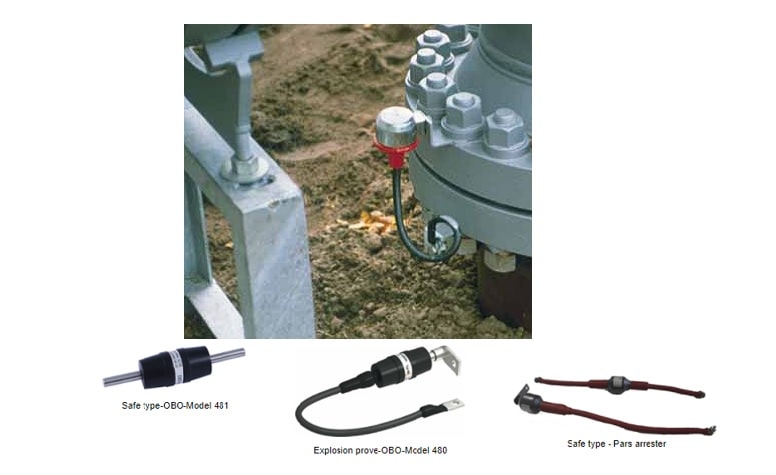Cathodic Protection Equipment
Transformer Rectifier
Transformer is one of the important and strategic equipment of cathodic protection system. Impressed current cathodic protection systems, a transformer or direct current power supply is used to increase the potential of the electrons from the anodes to provide the desired protective current. Almost all impressed current cathodic protection systems use alternating current transformers as power supply.
These transformers are designed to meet IEC, IPS and other standards of the customer. One and three phase transformers up to 400 volts and frequency 50/60 Hz are produced in this company. Depending on the situation, these transformers are cooled by air or oil. Also, these transformers can work outdoors or indoors and in the temperature range of -20 to 55 degrees.
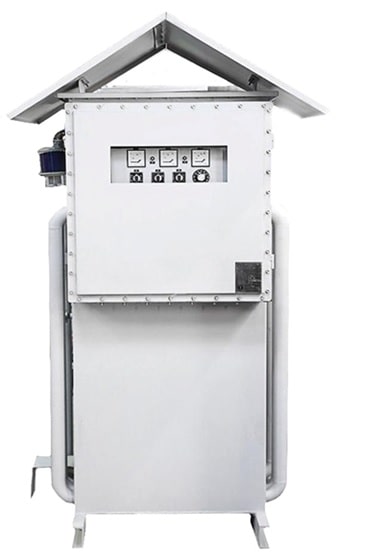
Anodes
Sacrificial Anodes
These types of anodes have a limited lifespan and are used for cathodic protection of underground lines with limited length and temporary cathodic protection and for this reason they are also known as sacrificial anodes.
Permanent Anodes
For large structures or where the electrolyte resistance is high, galvanic anodes cannot technically and economically provide the necessary current for protection. In these cases, a current injection system is used. In this system, the anodes are connected to a direct current power supply, which is often a transformer. The anodes in this system are available in a variety of sizes and shapes. Anodes in the form of tubes, rods, ribbons and wires are made of different materials.
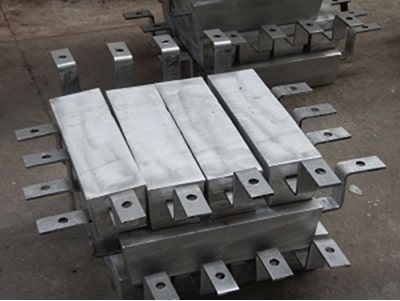
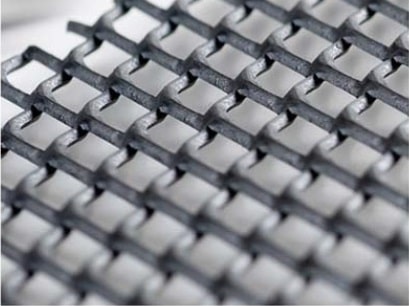
Connection box and test points and markers
Bonding Box is used in cathodic protection systems to connect trans-rectifier cables to anodes and structures. Pipeline potential with respect to soil, pipeline flow, stray flow through the pipeline, strength of insulation connections, etc. can be measured through the bond box. Cathodic protection multifunction junction boxes are designed in such a way that the user can easily attach the appropriate items and equipment to it. These boxes are used for coastal and marine environments in safe and high risk (EX) environments. Boxes used for safe environments are produced in two types, normal and IP. The company also offers boxes suitable for EX environments by providing valid certificates.
The route of the pipeline and the beginning and end of the cathodic protection groundbed are marked with a marker. The marker base is made of iron pipe with a diameter of 75, 100 or 150 mm (according to request). The sunshade is also made of iron plate with a thickness of 2 or 3 mm.
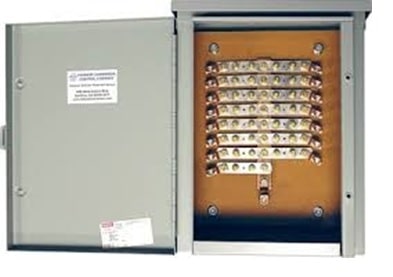
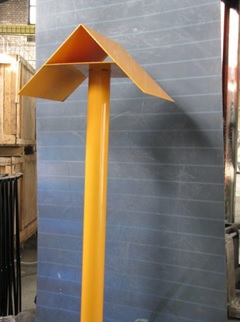
Reference electrodes
One of the methods of protecting the structure against corrosion is the installation and implementation of cathodic protection system. In order to monitor the performance of the cathodic protection system and to evaluate and compare the results, the potential of the structure relative to a reference electrode should be measured. Reference electrodes are divided into the following two general categories:
1- Permanent
2- Portable
Because portable reference electrodes are separated from structures, these types of electrodes are called half-cells. Types of reference electrodes are:
- Standard hydrogen electrode (SHE or NHE)
- Calomel Standard Electrode (SCE)
- Reference electrode Cu / CuSo4) CSE)
- Reference electrode Ag / AgCl (SSE)
- Reference electrode Zn or Zn / ZnSo4) ZSE)
Applications
(Cu/CuSo4, Zn/ZnSo4)Soil
(Ag/AgCl/0.5 M KCL, Cu/CuSo4)Fresh Water
(Ag/AgCl/Standard KCL, Zn)Salt Water
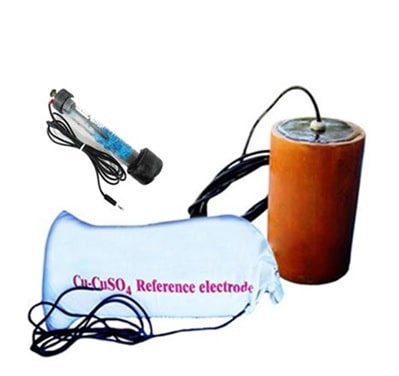
Cables
The use of dual HMWPE / PVDF cables is recommended when corrosion resistance needs to be improved, for example in deep substrates. Empirically, anode cables in deep wells are the main cause of system inefficiencies. So that by establishing the flow, a large amount of chlorine gas is produced. This destructive gas destroys the insulation cover, leading to the failure of the copper cable and the loss of the anode in the cathode protection circuit.
The most widely used cables of the cathodic protection system are with aluminum and copper cores and according to its application and the amount of chlorine in the environment, it has a coating composed of PVC, XLPE, PE, HMWPE and PVDF. These cables are controlled, tested and inspected according to the requirements of IEC, BS, VDE and JIS standards to all their important characteristics such as DC resistance, insulation resistance, voltage test, attenuation, impedance capacitance for RF cables and cables. Audio and physical specifications of the cable are checked.
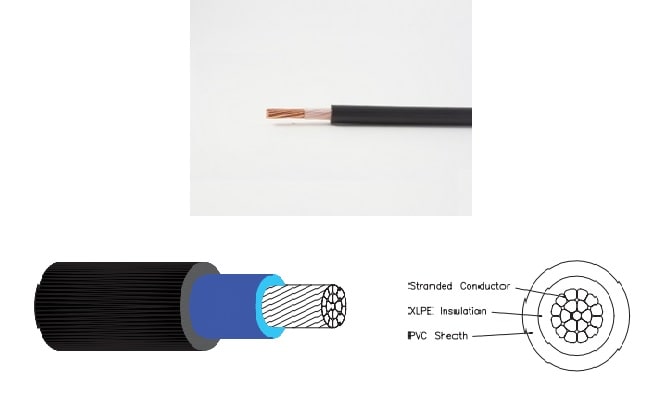
Applications of HMWPE Cables
This type of cable is designed to create lead connections of anodes in various environments. The cable's dual insulation structure allows it to be placed directly in the ground or used in fresh water or salt water. Sometimes due to the presence of chlorine and hydrogen gases in the environment, the use of this cable is highly recommended
Coke Breeze
Coke Breeze is a type of carbon backfill material that is placed around the anode. Its applications are as follows:
- Reduces the electrical resistance of the environment around the anode to increase the amount of current that the anode can discharge.
- Increases the anode level. Therefore, it discharges more current.
- Reduces anode consumption because carbon is consumed like an anode itself before the anode is consumed.
The size and shape of the coke grains are very important. Both parameters determine the amount of contact between the anode and the surrounding soil, resulting in porosity. This porosity plays an important role in the release of gas. Common use of coke breeze is for horizontal anodic substrates, shallow vertical or dry wells.
Generally carbonaceous backfill material usually is one of the following types:
- Type 1: Coal coke breeze
- Type 2: Calcined petroleum coke breeze
- Type 3: Special calcined petroleum coke breeze
Types 1 and 2 are commonly used in shallow anodic substrates and type 3 in deep anodic substrates. According to IPS-M-TP-750/2 standard, three types of carbon backfill materials are provided that have high amounts of carbon (metallurgical coke 80%, petroleum coke 90% and special petroleum coke 95%).
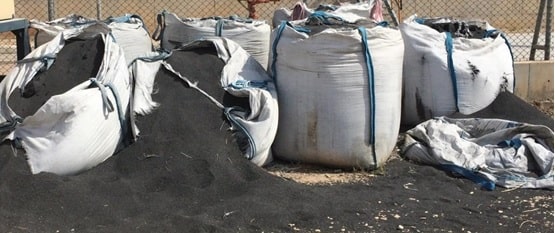
Cathodic protection coupons
Coupons are generally divided into two types:
Corrosion coupons:
These Coupons should be installed where the amount of protection current received by them is similar to that of the structure, and after a certain period of time, these coupons are removed and weighed. Corrosion rate is the weight loss per unit time.
Polarization coupons:
One of the ways in which the performance of the cathodic protection system can be evaluated is the use of polarization coupons. These coupons are electrically connected to the protected structure.
In other words, polarization coupons can be used to monitor the cathodic protection system. One of the advantages of these coupons is that the potential of the structure can be measured without interrupting multiple power supplies and by eliminating IR drop.
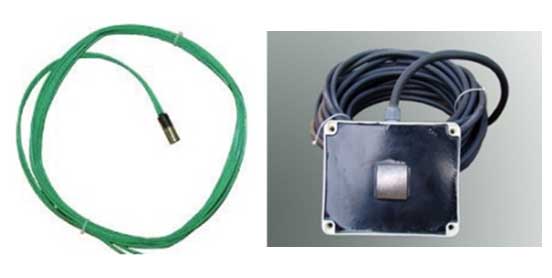
Insulation Kits
Petro Farayand Alvand Company produces insulation kits for all flange sizes as well as all pressures. These kits are usually installed at the beginning and end of each pipe section and wherever the pipeline is moved from the underground to the above ground to electrically bury the pipe from the rest of the external metal structure and insulate the Earthing system and also prevent leakage of current in cathodic protection system.
Flange insulation kits include middle gaskets, insulating washers and insulating sleeves that are produced and offered in integrated packages.
There are two types of production kits:
Flange insulation kit (cathodic protection)
E Type
In type E or full-faced gaskets, the outer diameter is equal to the flange, and the flange holes are installed exactly on it.
Type E gaskets are produced in two simple types, either Neoprene face phenolic or heat-resistant material.
Type F
Type F gasket covers the raised face part of the flange and there is no hole on it. Type F gaskets are also produced and offered in two simple types, Neoprene face phenolic or heat-resistant material.
Dielectric flange separation kits for ASME flanges B16.5, B.1647, API are available in all sizes and classes, from 1.2 to 80 inches.
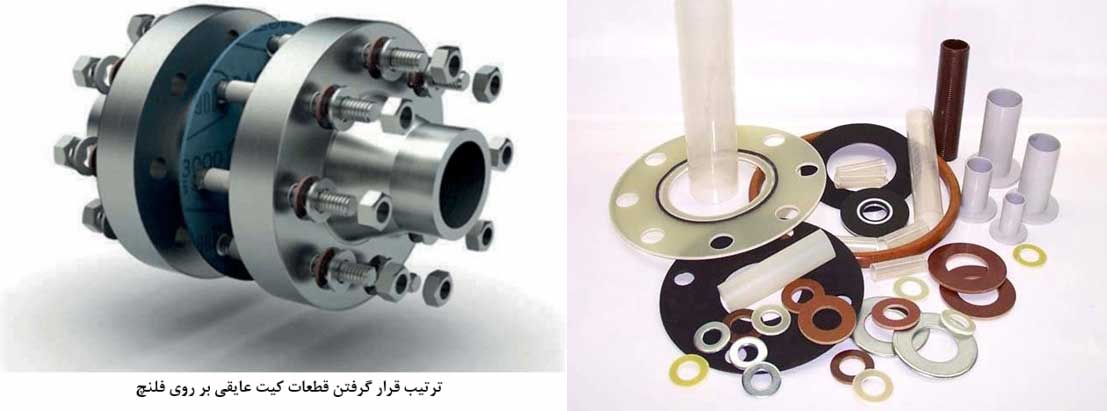
Polarization Cell
Decoupler or DC current separator instruments in electrolytic polarization (PC) and electronic (PCR) types are connected to the cathodic protection structure and separate the earthing system from the cathodic protection system, which wastes the current of the cathodic protection system towards a noble metal ( As ground electrode) prevents. The passage of AC current includes fault and lightning and prevent the loss of DC current to ground is principles of operation in polarization cells.
All Types of polarization Cells:
- Electrolytic polarization cell (liquid)
- Electronic polarization Cell (Solid)

Spark Gap
Spark gap is installed on flanges that have an insulation kit. Due to the fact that the gaskets (middle insulation washers) of the insulation kit have electrical and physical resistance against a certain voltage, which may be damaged during lightning or possible gaskets faults. For this reason, spark gap is used to protect the gasket. Spark gap is offered in the type suitable for safe and high-risk areas (EX).
Spark gap is normally disconnected and connects the two networks in the event of a lightning strike in a fraction of a second. Spark gap consists of two electrodes separated by a gap, usually filled with a gas such as air or sulfur hexafluoride.
